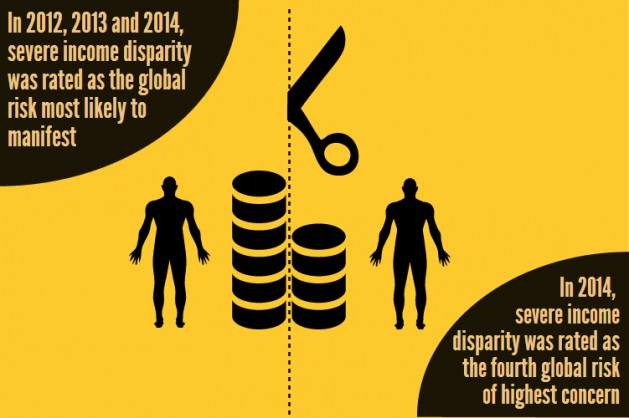Rich Getting Richer as the Poor Crawl Slowly Out of Poverty
CAPITALISM, 9 Jun 2014
Diana Cariboni, IPS – TRANSCEND Media Service
The very contemporary medieval novels of Welsh author Ken Follett transport readers to a time when the rich had everything – and the poor didn’t even own themselves.
These stories, set in the 12th, 13th and 14th centuries, provide some consolation to today’s readers, who are now surrounded by comforts, freedoms and guarantees.
Poverty was the norm back then. As Follett himself says, “the richest of princes did not live as well as, say, a prisoner in a modern jail.”
Poverty and inequality are not the same thing, but they reinforce each other. In the poverty-stricken Middle Ages, the inequality was terrible. Between the dispossessed common people and the princes, feudal lords and powerful members of the clergy there was a social and economic vacuum that took decades to fill.
Opulence is the overarching parameter of success in 21st century society. But the problem is that all around the world, the rich are getting richer and richer while the armies of poor are pulling out of poverty very slowly, and are never far from the edge.
In India, which is home to 1.2 billion people, the number of billionaires rose tenfold in the last decade. In 2003 they owned 1.8 percent of the national wealth, compared to 26 percent in 2008, according to the international development organisation Oxfam.
Meanwhile, progress in reducing extreme poverty has been too slow: there were 429 million indigents in 1981 and 400 million in 2010, the World Bank reports.
Inequality is increasing across the globe, warn institutions as representative of the neoliberal, free market deregulation mindset as the International Monetary Fund and the World Economic Forum.
According to the Credit Suisse bank, 10 percent of the world population holds 86 percent of the wealth, while the poorest 70 percent (over three billion people) holds just three percent.
The World Economic Forum’s Global Risks report, based on a survey of global elites, stresses income disparity as one of the principal emerging risks.
Are we returning to the Middle Ages?
That would appear to be impossible. The middle classes, or the ranks of the “non-poor”, continue to grow, especially in the large developing countries.
Extreme poverty has been drastically reduced around the world since the 1980s. In 1981, over half of the population of developing countries was extremely poor – a proportion that shrank to 21 percent by 2010, according to the World Bank.
But gaps in income and wealth are growing wider, including in places with well-established middle classes, like Europe or the United States.
PLEASE CONTINUE READING IN THE ORIGINAL – ipsnews.net
This article originally appeared on Transcend Media Service (TMS) on 9 Jun 2014.
Anticopyright: Editorials and articles originated on TMS may be freely reprinted, disseminated, translated and used as background material, provided an acknowledgement and link to the source, TMS: Rich Getting Richer as the Poor Crawl Slowly Out of Poverty, is included. Thank you.
If you enjoyed this article, please donate to TMS to join the growing list of TMS Supporters.

This work is licensed under a CC BY-NC 4.0 License.
